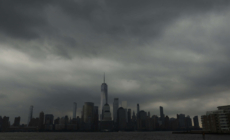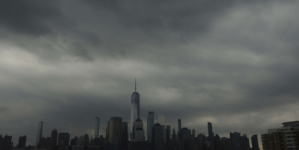-
Red Sox’ Shocking Offer Revealed For Twins’ Joe Ryan At Trade Deadline - 21 mins ago
-
Yankees vs. Marlins Highlights | MLB on FOX - 35 mins ago
-
L.A. teachers demand LAUSD provide more protection for immigrants - 46 mins ago
-
Yankees Predicted To Sever Ties With Fan Favorite Pitcher Following Trade Deadline Moves - 60 mins ago
-
Tigers vs. Phillies Highlights | MLB on FOX - about 1 hour ago
-
Gifford fire burns 30,000 acres in Los Padres National Forest - about 1 hour ago
-
Jerry Jones Rejects Cowboys Star’s Shocking Request - 2 hours ago
-
MLB Speedway Classic at Bristol Motor Speedway Suspended, Resuming Sunday - 2 hours ago
-
Small Earthquake Rattles NYC and New Jersey Saturday Night - 2 hours ago
-
Lionel Messi Exits Inter Miami’s League Cup With Apparent Leg Injury - 3 hours ago
Millions Urged To Monitor Wheezing, Dizziness
Air quality alerts were in effect for nine states on Friday, with officials urging residents in some affected areas to monitor for potential health effects caused by pollution.
Why It Matters
According to the Environmental Protection Agency (EPA), studies have linked particle pollution exposure to various health effects, including respiratory symptoms—such as coughing and wheezing, the development of asthma and increased susceptibility to respiratory infections.
Regarding ozone pollution, the EPA says exposure to ozone may irritate the respiratory tract, cause airway inflammation and aggravate existing conditions—such as asthma, emphysema and chronic bronchitis.
What To Know
The alerts spanned the entirety of Minnesota, Wisconsin, Michigan, Illinois and Iowa as well as an eastern portion of Nebraska and the St. Louis metropolitan area in Missouri because of smoke from wildfires in Canada.
“Monitor for symptoms such as wheezing, coughing, chest tightness, dizziness, or burning in nose, throat, and eyes,” an alert relayed by the National Weather Service (NWS) said.
“Reduce or eliminate activities that contribute to air pollution, such as outdoor burning, and use of residential wood burning devices,” it continued.
In Minnesota, local authorities said northerly winds would carry heavy smoke from wildfires across Manitoba and Saskatchewan into the state, lingering through Saturday afternoon, when some improvement was forecast.
Meanwhile, air quality alerts had been issued for Colorado and Texas because of ozone pollution.
These covered Colorado’s Douglas, Jefferson, Denver, western Arapahoe, western Adams, Broomfield, Boulder, Larimer and Weld Counties. In Texas, the Dallas-Fort Worth area was affected.
In Colorado, ozone concentrations that were potentially unhealthy for sensitive groups—including children, older adults and those with preexisting medical conditions—were most likely from the western suburbs of Denver, northward along the foothills and the I-25 urban corridor to the Fort Collins area, officials said.
In Texas, weather conditions were predicted to be conducive to high levels of ozone air pollution in the Dallas-Fort Worth area. Residents were advised to take steps to help prevent pollution, such as reducing vehicle use.
What People Are Saying
The National Weather Service in Omaha/Valley, Nebraska, wrote on X on Thursday: “The hazy skies today are a result of Canadian wildfire smoke, which is expected to linger in the area through Friday afternoon. The smoke is leading to moderate to unhealthy air quality, especially for sensitive groups.”
NWS Chicago wrote on X on Thursday: “Poor air quality due to wildfire smoke is expected to continue through tomorrow and will be at unhealthy levels for everyone in some locations. Consider limiting prolonged outdoor activity.”
NWS Twin Cities, Minnesota, wrote on X on Wednesday: “Wildfire smoke sticks around through the beginning of the weekend, before storm chances return late Sunday into Monday.”
AccuWeather meteorologist Brandon Buckingham previously told Newsweek: “Ozone is a secondary pollutant, meaning it’s not emitted directly from sources, but is formed through chemical reactions. These reactions require sunlight and higher temperatures, making warmer months more prone to ozone formation. When air is stagnant, pollutants don’t get dispersed, allowing ozone to build up to unhealthy levels.”
What Happens Next
At the time of writing, the latest of the alerts were in effect through Saturday.
The NWS issues regular forecast updates on its website.
Source link






























